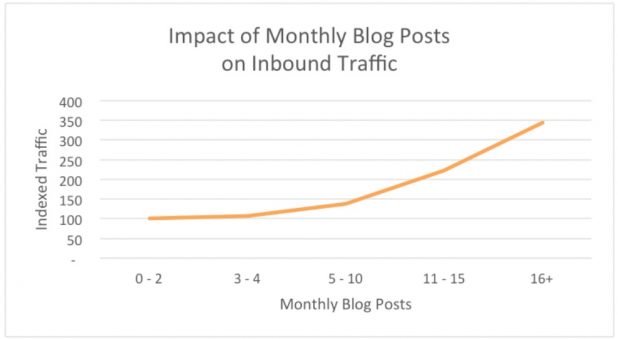SEO for Small Businesses: Essentials and Non-Essentials

Most of the clients we work with are intimidated by SEO and especially by what SEO writing entails. And for good reason: if you read an article about the basics of SEO and what you need in order to rank, you’ll be overwhelmed by the budget requirements.
But throwing money at a problem doesn’t always mean solving it.
Sure, it would be nice to have a million-dollar budget for SEO. If you don’t have it, though, what are you supposed to do? Skip it altogether?
Not at all!
After years of helping small businesses drive ROI from their SEO efforts, we can easily pinpoint what works and what you shouldn’t waste money on.
Here’s what worked for us and for our clients (or how to rock SEO on a budget):
1. Publish SEO content regularly
Content is the lifeblood of SEO. Even if your website is perfectly optimized, you won’t rank consistently for the terms you need without content.
SEO is not a one-time thing. It’s an on-going process.
So you can’t simply dump one hundred blog posts and be done with it.
The freshness of content is one of the most important ranking factors, according to Google. And if you think about it, it makes perfect sense: information becomes obsolete very quickly, so an article that was relevant five years ago might be outdated and even full of errors today.
Unless it’s evergreen content, of course.
Does this mean I have to publish new content daily?
Not at all!
There are research reports that say that the more content you publish, the better.
Image via HubSpot
And that’s true to some extent.
However, if you don’t have the bandwidth to publish tens of blog posts per month it’s better to stick to what you can do well.
Great SEO content/copy is not cheap. So stick to what you can afford in terms of budget, time and knowledge.
You’re better off publishing one great blog post per week than five mediocre posts that are filled with factual errors, typos and lack value altogether.
Pro tip: We always advise our clients to create one or two blog posts per week, ideally long-form ones. While we have seen better results in clients for whom we create 10+ posts per month, this depends a lot on industry.
So, if you’re not sure whether you should invest more in content or put your money elsewhere, take a look at your competitors. Find out what they are doing, how often they are blogging and what terms they are ranking for. This should give you an insight into what you are competing against.
2. Publish guest posts
After regularly published content, backlinks are the best way to boost your ranking. Publishing guest posts comes with two major advantages:
- You earn those previous backlinks from high-authority websites
- You get to reach new audiences and boost your brand awareness
And yes, you might even get new clients this way. For instance, my regular column here on SiteProNews brings at least three new inquiries per month. People read my articles, they click on the link to my website and, from there on, it’s just a matter of finding out if they’re a match to our style.
Some guest posts bring clients, others don’t. But they all bring backlinks.
What if I can’t afford to pay to have my content published elsewhere?
In theory, you shouldn’t have to pay at all. Yes, you can buy both links and space to publish your articles, but you can also do it for free.
If your content is good enough to be syndicated or published by another media outlet, then that’s all you need. Of course, unless you’re aiming for huge publications like TechCrunch or Huffington Post.
Recommended frequency: a minimum of one per month.
Pro tip: Start looking for smaller media outlets in your niche or your area. Chances are you could have a mutually-beneficial relationship without spending a dime.
Just be sure to read the editorial guidelines carefully and submit articles that bring value to their audience.
You can start with this list.
3. Get the basics right
While content publishing frequency can be “negotiated”, other SEO basics leave very little wiggle room. When you’re launching a new business/website or auditing an older one, make sure to check all these boxes:
- Page loading speed. Check it here. Anything above 2.5 seconds needs a call to your web developer. Ideally, you should aim for a loading speed under 2 seconds.
- Google My Business Listing. Create it here. It’s a free way to get noticed by Google and it becomes mandatory if you run a local business – this is the way to literally put yourself on the map. You can also create posts here, just like you can on Facebook or Twitter. Google My Business is ideal for your limited time offers.
- Google Analytics and Google Search Console. Monitor your traffic frequently – at least once a week. Check the keywords you are ranking for and identify new opportunities. And take a close look at traffic sources and conversion sources.
Pro tip: All in all, you don’t need to spend more than half an hour per week on all of the above. Don’t bury yourself in stats and pattern analysis, especially if you’re not an SEO pro. It can do more harm than good.
4. Reach out to influencers
In your regularly published content, you will certainly link to other websites or influencers. Why not make sure they know about it?
When you publish a new piece of content, you can reach out individually via email to the influencers you quoted or you can tag them on social media. Chances are you will earn at least one retweet, if not a link on their own website.
Pro tip: In SEO, popularity breeds popularity. This means that the more popular an article on other platforms (like social media networks), the better its ranking will be.
While you can’t say for sure how many page hits you need to boost ranking, expanding your reach to other influencers’ network is definitely helpful.
Wrapping things up
The most valuable SEO is the kind that brings you revenue. It may seem redundant, but you’d be surprised at how many people only look at vanity metrics like traffic instead of ROI when it comes to measuring SEO success.
So, instead of pushing yourself to write dozens of articles, focus on writing a few great ones. The kind that people share, retweet and link to. The kind that bring actual value to your potential clients.
Remember: if human readers love your content, so will Google. Always write for humans instead of bots.
By Adriana Tica




